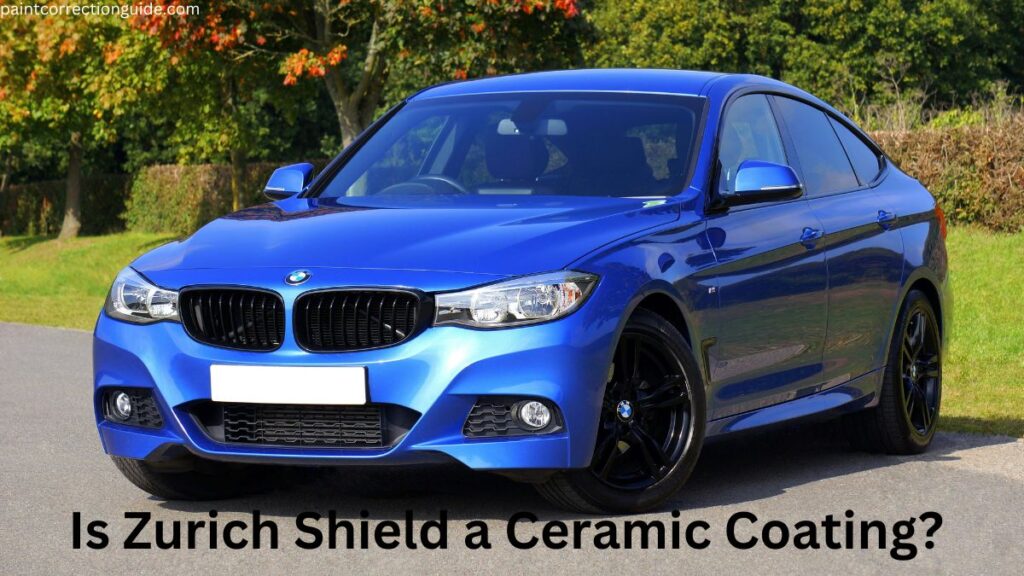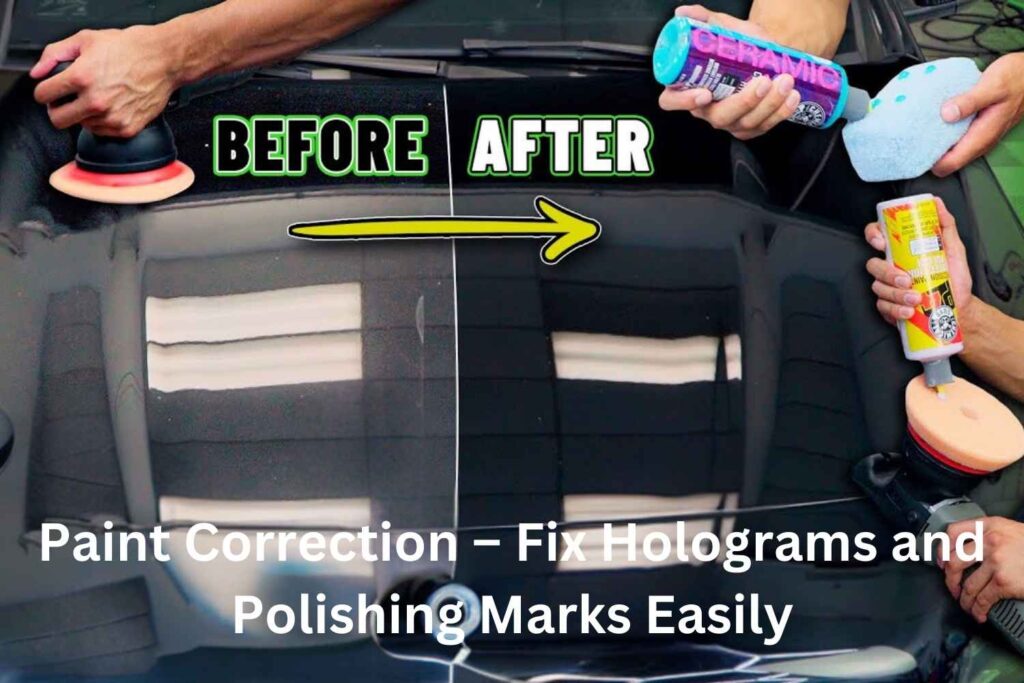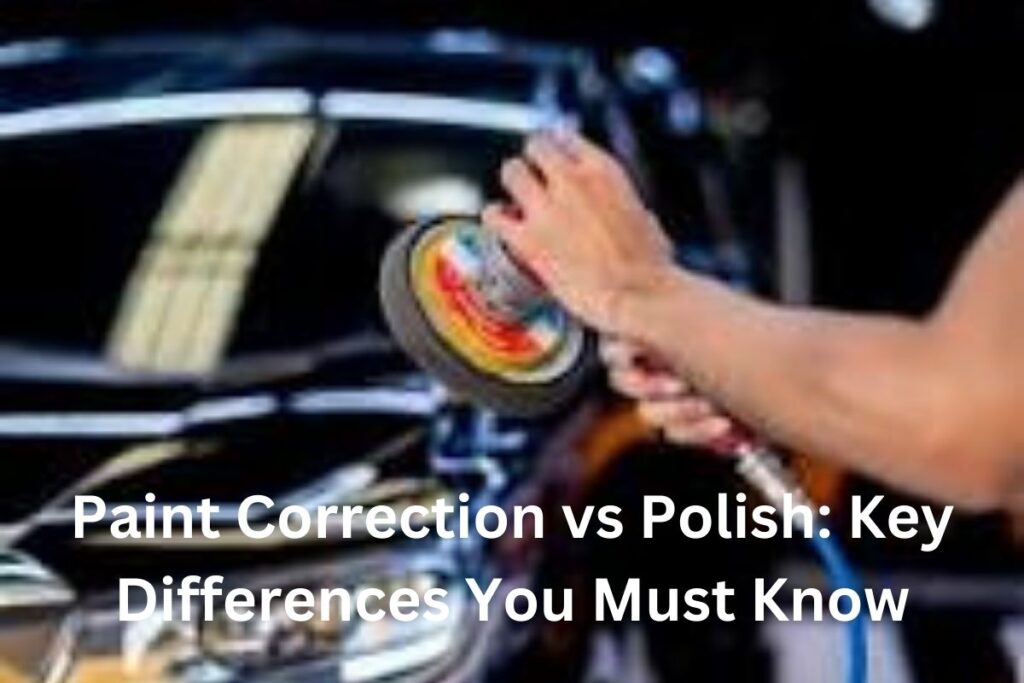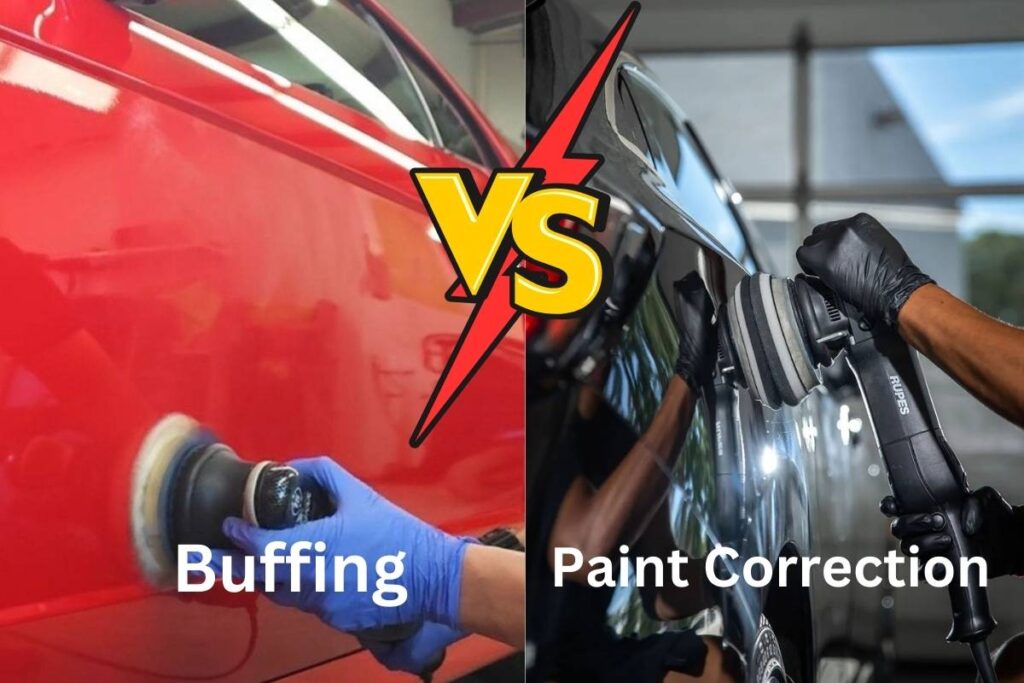Why fix your car’s paint before applying Paint Protection Film (PPF)? Many people think PPF alone is enough to protect and enhance their car’s look, but that’s not true. Paint imperfections like scratches and swirl marks can stay visible under the film, ruining the car’s appearance. These flaws can even reduce how well the PPF sticks to the paint.
This blog will explain why paint correction before PPF is a must. You’ll learn how it protects your car, improves its shine, and saves money in the long run. By the end, you’ll know exactly why this step matters and how it ensures the best results for your car’s protection and style.
Table of Contents
ToggleWhy Is Paint Correction Necessary Before PPF?
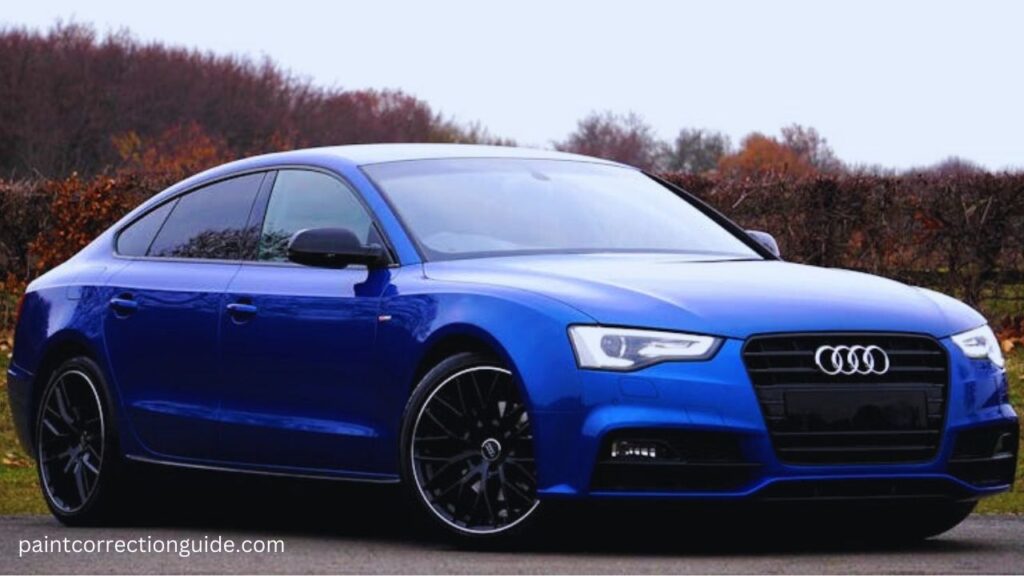
Paint correction is a vital step before applying Paint Protection Film. Skipping this step can lead to several issues that affect the look and protection of your car.
Scratches, swirl marks, and other imperfections sit on the surface of the paint. PPF is clear and sticks tightly to the surface. If the paint has defects, the film traps them underneath. This makes flaws more noticeable. Instead of hiding these issues, PPF can highlight them.
A smooth surface allows PPF to stick properly. Imperfections, like scratches or tiny bumps, can create air pockets under the film. These bubbles may cause the film to lift or peel over time. Proper adhesion depends on a clean, polished base.
Clean, corrected paint also looks better under PPF. The film adds a glossy finish, but only if the paint underneath is smooth and defect-free. Dirt, oxidation, or scratches dull the shine. Polishing the paint first restores its clarity and color, giving the PPF a perfect surface to enhance.
Contaminants on the paint can also cause trouble. Wax, grease, or dirt left on the surface interferes with how the film bonds. Even tiny particles can reduce the strength of the protection. Paint correction removes these impurities, ensuring the best results.
Skipping this step risks wasting time and money. Correcting paint after applying PPF is not an option. The film must be removed and replaced, which is costly. Starting with paint correction prevents this issue.
A polished surface makes a difference. It keeps the car’s paint safe and helps the PPF last longer. It’s not just about looks. It’s about doing the job right the first time.
Importance of Paint Correction Before PPF Application
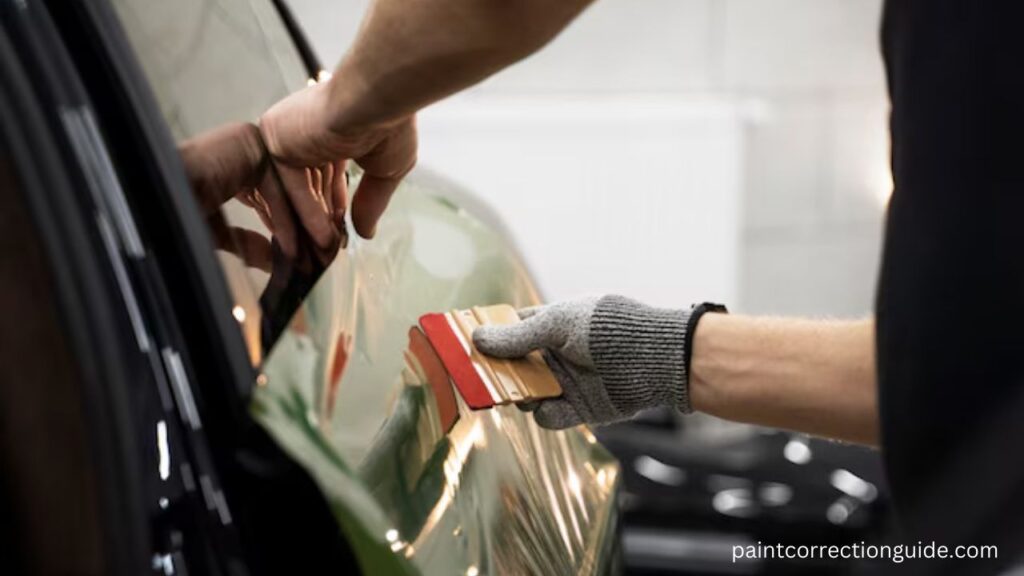
Paint correction removes imperfections. It prepares the surface for a flawless finish under Paint Protection Film (PPF). This step is not optional if you want the best results.
Surface imperfections, like swirl marks and scratches, can ruin the look of a car. These flaws might seem minor, but PPF locks them in place. Once sealed, they become permanent. Worse, the clear film can make scratches appear larger and more noticeable. Paint correction fixes these issues before they become a problem.
A smooth surface allows the PPF to stick evenly. Without it, defects can create weak spots. Air bubbles and lifting edges form over rough or uneven paint. These problems shorten the life of the PPF and reduce its effectiveness. Correcting the paint first ensures strong adhesion and long-lasting protection.
Gloss and shine depend on the paint underneath the PPF. Clear films enhance the surface, but they don’t fix dull or damaged paint. Polishing the paint restores its depth and color. This step allows the PPF to highlight the car’s beauty, not its flaws.
Dirty or contaminated paint also causes issues. Wax residue, grease, or tiny particles prevent the film from bonding properly. Paint correction removes these substances. The result is a clean surface that supports better film application.
Skipping this step risks wasting money and effort. Fixing paint problems after applying PPF means starting over. The film must be removed, and new material applied. This process is costly and time-consuming. Taking the time for paint correction upfront avoids these headaches.
Every detail matters. Paint correction improves the look and life of both the paint and the PPF. It’s the foundation for a polished, protected finish. Without it, the results fall short.
Risks of Skipping Paint Correction
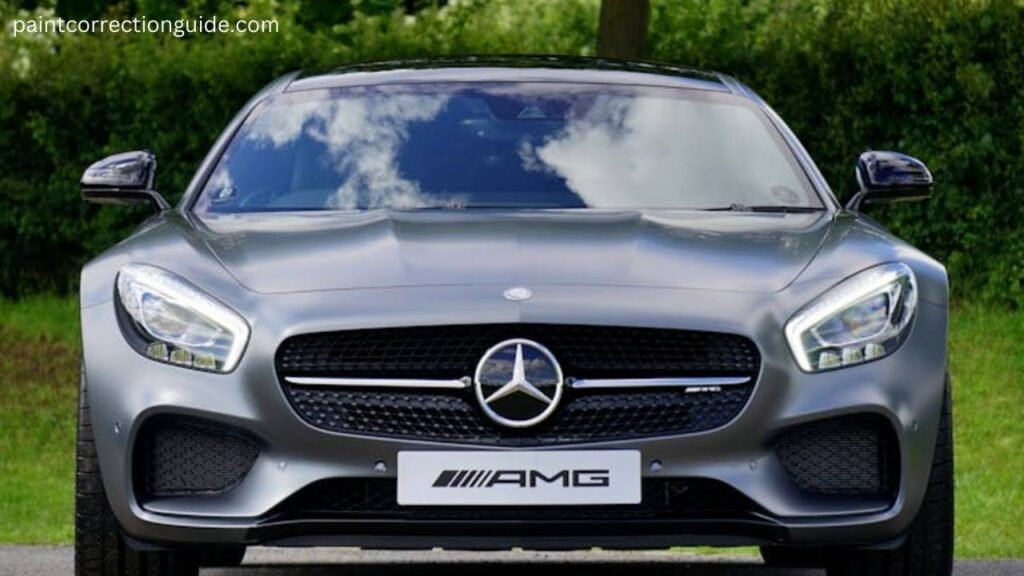
Skipping paint correction before applying Paint Protection Film (PPF) can lead to serious problems. Many think this step is optional, but skipping it often causes regret later.
Defects in the paint become permanent. Scratches, swirl marks, and other flaws stay locked under the PPF. The film is clear, so these imperfections remain visible. Instead of hiding them, the film often makes them stand out more. The car’s surface looks worse, not better.
Poor adhesion is another risk. Imperfections like bumps or dirt can prevent the film from sticking properly. Air pockets and lifting edges form over time. These weak spots shorten the life of the PPF. They also allow dirt and moisture to creep under the film, reducing its protective effect.
A dull finish is also a common issue. PPF highlights the surface it covers. If the paint lacks gloss, the film can’t create shine on its own. The result is a cloudy or uneven look. Polished paint ensures the PPF enhances, rather than hides, the car’s beauty.
Contaminants on the paint cause problems too. Wax, grease, and dirt interfere with the bonding process. Without a clean surface, the film doesn’t perform well. Over time, loose edges and peeling may occur.
Fixing these problems is expensive. Once the PPF is applied, removing it to correct the paint means starting over. New film must be installed, which increases costs. Taking time for paint correction beforehand prevents this waste.
Skipping paint correction can ruin the results. It affects the look, protection, and durability of the PPF. This step is not an extra. It’s a necessary part of the process.
Steps in the Paint Correction Process
Fixing the paint before applying PPF follows a detailed process. Each step ensures the surface becomes smooth and ready for protection. Missing any step can affect the results. Here’s what the process involves:
Inspection
Start by checking the paint for flaws. Look for swirl marks, scratches, or dull spots. Use good lighting to spot even the smallest imperfections. This step helps decide how much correction is needed.
Surface Preparation
Clean the car thoroughly. Wash it to remove dirt, dust, and grease. Use a clay bar to lift embedded particles like tar or iron deposits. These contaminants can block the correction process. A clean surface allows for better results.
Polishing
Polish the paint to remove scratches and marks. Use a polishing machine or a soft applicator with the right compound. Start with a gentle polish and increase strength if needed. Work in small sections for better control. Keep checking progress to avoid over-polishing.
Finishing Touches
Wipe down the surface with a clean microfiber cloth. This removes leftover polishing oils. Check the paint again to ensure all imperfections are gone. The surface should now feel smooth and look glossy.
Final Cleaning
Wash the car again to remove any dust or residue from polishing. A spotless surface helps the PPF bond better. Even small particles can affect the adhesion, so this step is important.
These steps make the paint ready for PPF application. Each one plays a key role in ensuring the film works well and looks great. Skipping any part of the process risks leaving the paint imperfect. Perfect preparation gives perfect results.
Benefits of Combining Paint Correction with PPF
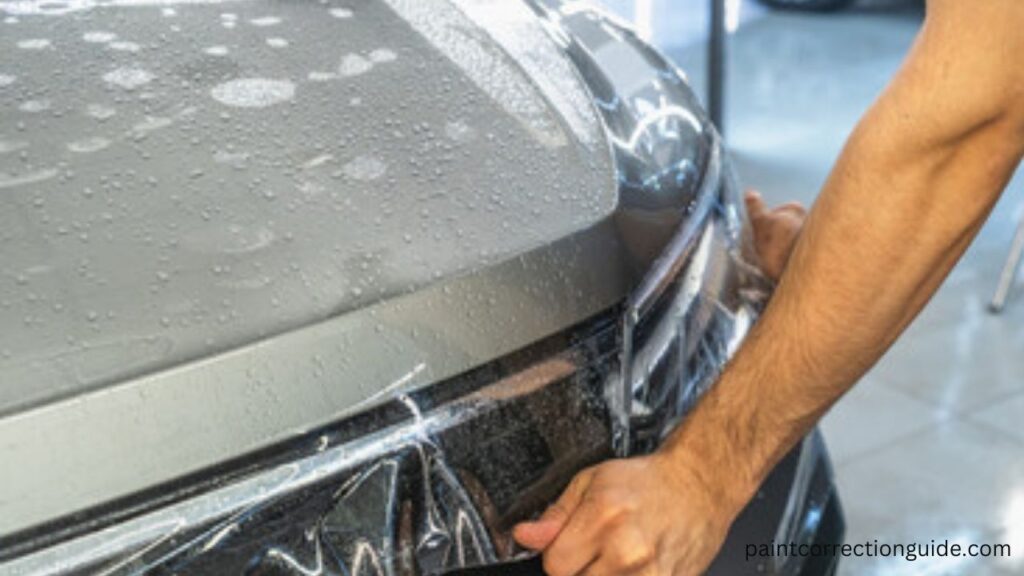
Paint correction and Paint Protection Film (PPF) work together. This combination improves the car’s appearance and protects it for years. Each process supports the other.
A polished surface under PPF keeps the car looking new. Scratches, swirl marks, and dull patches disappear during paint correction. The result is smooth and glossy paint. PPF enhances this shine by adding a clear protective layer. The car’s color looks richer and deeper.
PPF lasts longer on a corrected surface. Polished paint provides a smooth base. This allows the film to stick well without air bubbles or loose edges. Strong adhesion prevents peeling or lifting over time. The protection remains effective.
The film also preserves the corrected paint. Once applied, PPF shields the surface from new damage. Chips, scratches, and stains from road debris or bird droppings cannot reach the paint. The corrected surface stays in perfect condition.
This combination saves money in the long run. Corrected paint under PPF needs less maintenance. The film protects against common problems that require expensive repairs. The car retains its value and looks better for longer.
Polished paint and PPF together create a flawless finish. The car looks smooth, shiny, and new. The protective layer ensures it stays that way for years. This partnership between correction and protection benefits both the car and its owner.
Conclusion
Paint correction before applying Paint Protection Film (PPF) is not an extra step. It is a necessary part of the process. Skipping it risks locking flaws into the paint forever. Scratches, swirl marks, and dull spots become permanent under the clear film.
A corrected surface ensures the PPF sticks properly. This prevents bubbles and peeling, which can shorten the life of the film. Smooth, polished paint also enhances the car’s shine. The protective film amplifies the beauty of the corrected surface, making the car look brand new.
Paint correction also protects your investment. It prepares the car for long-term protection. The corrected surface stays safe under the PPF, saving money on future repairs. Both the paint and the protective film last longer when done right.
Each step in the process matters. Inspection, cleaning, polishing, and final preparation create a flawless base for PPF. Skipping any of these steps can lead to problems. Starting with correction ensures the best results.
Paint correction and PPF work best together. They protect the car’s paint and improve its appearance. This combination keeps the car looking great for years. It is the right way to care for your car.
Frequently Asked Questions (FAQs)
Is paint correction necessary before applying PPF?
Yes, it is. Paint correction removes scratches and imperfections. This ensures the Paint Protection Film (PPF) adheres properly and looks smooth.
Can I apply PPF on a new car without paint correction?
Even new cars can have minor paint flaws. A light paint correction ensures the PPF bonds well and the finish is flawless.
What happens if I skip paint correction before PPF?
Skipping paint correction can trap imperfections under the film. This may lead to poor adhesion and visible defects.
How long does paint correction take before applying PPF?
The time varies based on the car’s condition. It can take from a few hours to a full day. A professional can provide a precise estimate.
Is paint correction worth the extra cost before PPF?
Yes, it is. Investing in paint correction enhances the PPF’s appearance and durability. It helps maintain your car’s value over time.


